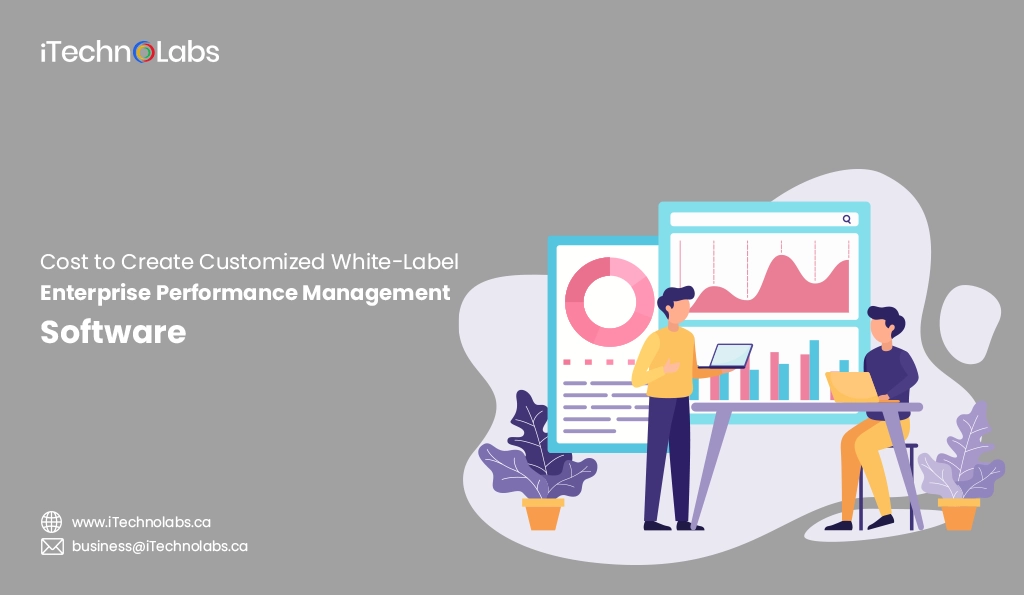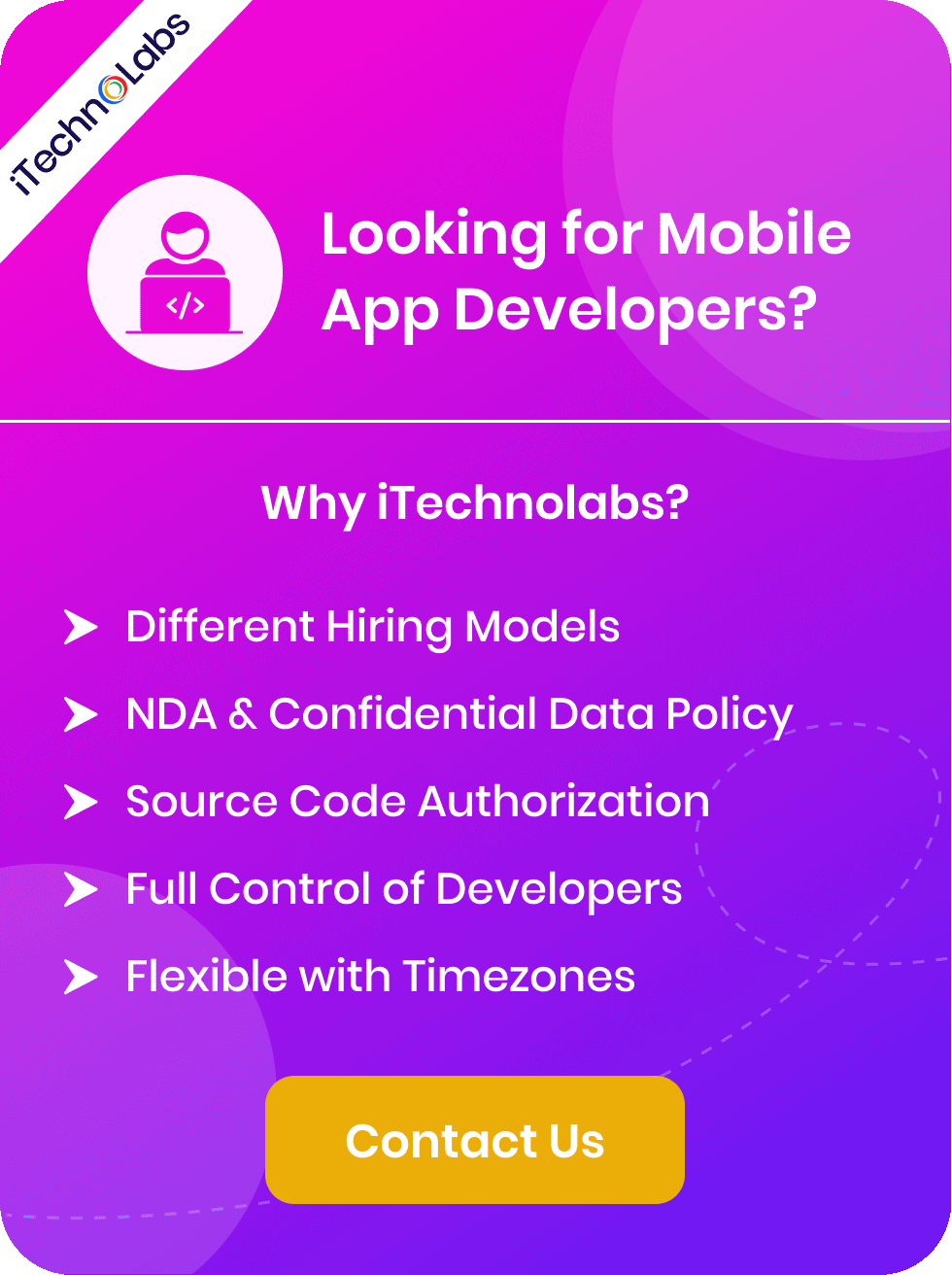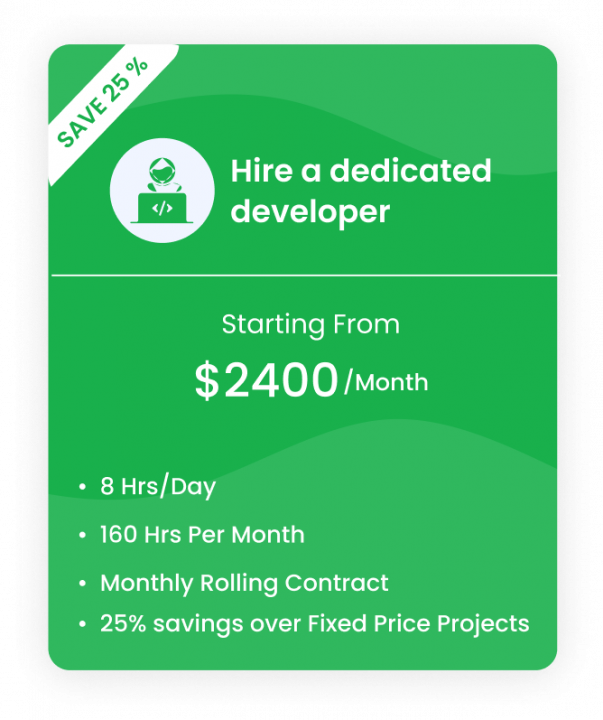When embarking on the journey of developing customized white-label Enterprise Performance Management Software (EPM), it’s crucial to approach the process with meticulous planning and consideration. This development is not just about creating a tool; it’s about engineering a solution that can transform an organization’s performance management. Among the myriad of considerations, one of the pivotal elements is the investment needed for this ambitious venture.
The financial commitment to develop a customized white-label EPM software is not a fixed figure but varies widely. This variance is attributed to several key factors, each contributing to the overall cost. Firstly, the complexity of the software itself plays a significant role. A more intricate system with advanced features and integrations will naturally require a more substantial investment than a simpler one. The desired functionalities, whether they’re for data analytics, real-time reporting, or predictive modeling, directly influence the complexity and, consequently, the cost.
Another critical factor is the development team’s rates, which can differ drastically based on their geographical location, expertise, and reputation. Choosing a highly experienced team from a region with a higher cost of living will inevitably impact the project’s budget. Furthermore, the project timeline is an essential aspect to consider. A tight deadline could necessitate additional resources to meet the project milestones on time, thereby increasing the overall investment required.
In this section, we delve deeper into these factors, aiming to provide a comprehensive understanding of what drives the investment needed for developing customized white-label EPM software. We’ll explore how each factor contributes to the cost and how potential developers can make informed decisions during the planning phase to ensure a successful outcome.
Factors Affecting Enterprise Performance Management Software Development Cost
Complexity of the Software
The complexity of the software is a crucial consideration when estimating the cost of developing a customized white-label EPM software. The more intricate and advanced the system, the higher the investment required. This is because complex software often requires more time, resources, and expertise to develop.
Some key factors that influence complexity include:
Customization and Integration
As previously discussed, white-label EPM (Enterprise Performance Management) software offers a customizable solution designed to align with specific business requirements and can be seamlessly integrated with other existing systems within an organization. This adaptability allows companies to tailor the software to their unique processes and workflows, enhancing overall efficiency and performance. However, it’s important to note that the extent of customization and integration needed can significantly influence the overall cost of implementation. Extensive customization to fit highly specific business needs or complex integration with a variety of other systems and platforms may necessitate additional technical resources, expertise, and time. Consequently, organizations considering these adjustments should be prepared for a higher investment to ensure the software fully meets their expectations and contributes to their success.
Data Volume and Complexity
The amount and complexity of data that needs to be managed can significantly impact the cost of developing an Enterprise Performance Management (EPM) software solution. As enterprises expand in scale and their operations become more complex, they naturally accumulate larger volumes of data. This increase in data volume is coupled with a potential rise in data complexity. Consequently, organizations that find themselves dealing with vast amounts of data or intricate data structures face the challenge of requiring additional resources and expertise. Developing a robust EPM software capable of accurately capturing, storing, and analyzing such extensive and complex information demands not only more financial investments but also a higher level of technical proficiency. Moreover, these organizations must ensure that their EPM software is scalable and adaptable to future changes in data volume and complexity, further adding to the development costs. This makes the initial planning and design phase crucial for successfully implementing an EPM solution that meets the company’s needs both now and in the future.
Features and Complexity of Implementation
The cost of developing an Enterprise Performance Management (EPM) solution is significantly influenced by the features and functionalities an organization requires. These features not only define the scope of the project but also determine the amount of resources, including time and personnel, that will be necessary to implement the solution successfully. The complexity of these features plays a pivotal role; more intricate and advanced features demand more resources, necessitating a larger investment of time and effort from the development team. Furthermore, the challenge of integrating these sophisticated features with existing systems or platforms adds another layer of complexity. This integration process requires not only additional technical expertise but also more time for meticulous planning, integration, and extensive testing to ensure seamless operation. As such, the integration of advanced features can significantly inflate costs, making it an important consideration in the planning and budgeting phase of an EPM solution development project.
Technology Stack
The choice of technology stack used in developing an EPM solution is another factor that can impact development costs. The complexity and flexibility of the chosen technologies must align with the project’s scope and requirements, as well as the expertise and resources available within the organization. Different technologies offer varying levels of customization, integration capabilities, security features, and scalability options, among others. This means that some technologies may be more suitable for certain projects, while others may not be a good fit. Thus, careful consideration and evaluation of the technology stack is essential to ensure that the chosen solution not only meets the organization’s current needs but also has room for future growth and adaptation.
Also Read: AI Inventory Management Software Development: Pricing and Capabilities
UI/UX Design and Customization
The user interface (UI) and user experience (UX) design of an EPM solution also play a significant role in development costs. A well-designed and intuitive UI/UX can enhance the usability and adoption of the solution, leading to higher productivity and efficiency gains for the organization. However, creating a visually appealing and functional UI/UX requires a considerable investment of time and resources. Additionally, some organizations may require a high level of customization in the design to align with their branding and specific business processes, which can further increase development costs.
Development Company and Resources
The choice of the development company or team and their level of expertise can greatly impact the cost of developing an EPM solution. Hiring a reputable and experienced development company or team may come at a higher cost, but it can also ensure a high-quality and efficient development process. On the other hand, opting for a cheaper or inexperienced team may lead to potential delays, errors, and additional costs in the long run.
Furthermore, the availability of skilled resources for a particular technology stack can also affect development costs. Some technologies may have a larger pool of experienced developers available, while others may be more niche and require specialized expertise, which can result in higher development costs due to limited resources.
Security and Compliance
EPM solutions deal with sensitive and confidential data, making security and compliance a crucial aspect of development. Implementing proper security measures to protect data from cyber-attacks and ensuring compliance with industry regulations can add significant costs to the development process. Organizations must prioritize these aspects to safeguard their data and avoid potential legal consequences.
Enterprise Performance Management Software Features
EPM software typically includes a specific set of features designed to help organizations manage their financial and operational performance effectively. These features may vary depending on the specific needs and requirements of an organization, but some commonly included features are:
Goal Setting and Alignment
Setting and aligning goals is an indispensable aspect of Enterprise Performance Management (EPM). This crucial feature empowers organizations to establish strategic goals and objectives, ensuring they are in harmony with the goals set at individual or team levels. By doing so, it fosters a sense of shared purpose and direction, creating a clear and unified vision that permeates the entire organization. This alignment is essential for driving performance, enhancing collaboration, and achieving sustained success in an increasingly competitive business environment.
Performance Evaluation and Reviews
Performance evaluation and reviews stand out as a vital component of EPM (Enterprise Performance Management) software, playing a crucial role in the optimization of organizational efficiency. This indispensable feature empowers organizations to meticulously track, measure, and analyze the performance of individuals, teams, and entire departments against well-defined goals and key performance indicators (KPIs). Beyond mere numerical assessment, it provides a comprehensive and holistic view of an organization’s overall performance, shining a light on both strengths and areas in need of enhancement.
Through the detailed insights gained, organizations are better positioned to identify specific areas for improvement, thereby facilitating a targeted approach to performance optimization. Furthermore, performance evaluations are instrumental in fostering a culture of continuous feedback. They enable managers to conduct regular feedback sessions, providing them with a platform to offer timely and constructive feedback, as well as personalized coaching to team members.
360-Degree Feedback
While traditional performance evaluations are typically conducted by a manager or supervisor, 360-degree feedback takes a more comprehensive approach. This multi-faceted evaluation process collects feedback from various sources, including peers, colleagues, subordinates, and customers. This allows for a well-rounded view of an individual’s performance and behavior within the organization.
360-degree feedback is becoming increasingly popular in organizations as it provides a more accurate and holistic view of an individual’s performance. It also promotes a culture of transparency and open communication, encouraging individuals to take ownership of their development and growth.
Employee Development and Training
Performance evaluations also serve as a valuable tool for employee development and training. Through the insights gained from these evaluations, organizations can identify skill gaps and areas for improvement in their workforce. This information can then be used to create targeted training and development programs to enhance individual and team performance.
Additionally, performance evaluations can help employees set goals and create action plans for their personal growth within the organization. This not only benefits the individual but also contributes to the overall success of the organization.
Recognition and Rewards
Performance evaluations can also be used to recognize and reward top performers within the organization. By highlighting strengths and accomplishments, individuals are motivated to continue their high level of performance. This recognition can take various forms, such as bonuses, promotions, or public acknowledgment.
Furthermore, performance evaluations can help identify potential future leaders within the organization. By recognizing and nurturing these individuals, organizations can cultivate a strong succession plan for key positions.
Analytics and Reporting
Another benefit of performance evaluations is the data they provide for analytics and reporting purposes. By collecting and analyzing performance data, organizations can identify trends, patterns, and potential issues within their workforce.
This data can be used to make informed decisions for future employee development, training strategies, and even recruitment efforts. It also allows organizations to track the progress of their employees over time and measure the effectiveness of their performance evaluation process.
Compliance and Documentation
Performance evaluations also serve an important role in compliance and documentation. They provide a record of an employee’s performance, which can be used as evidence in cases of disciplinary actions or legal disputes.
Additionally, certain industries or government agencies may require regular performance evaluations to ensure compliance with regulations and standards. By having a thorough and organized performance evaluation process in place, organizations can easily demonstrate their compliance and avoid potential legal issues.
Integration with HR Systems
Many organizations have shifted towards using HR systems to manage employee data and streamline processes. Performance evaluations can easily integrate with these systems, providing a centralized location for storing and accessing performance data.
This integration also allows for more efficient tracking of employee progress and simplifies the process of generating comprehensive reports for management teams.
Customization and Configurability
Performance evaluations can be customized and configured to meet the specific needs of an organization. This includes choosing the evaluation criteria, rating scales, and even the frequency of evaluations.
Customization allows organizations to align performance evaluations with their unique company culture and goals. It also ensures that employees are being evaluated on relevant metrics that accurately reflect their job responsibilities.
How to Develop an Enterprise Performance Management System?
Developing an effective enterprise performance management system involves several key steps:
Market Research and Analysis
Before implementing a performance management system, organizations should conduct market research and analysis to understand the latest trends, best practices, and available tools in the industry. This will provide valuable insights into what works best for similar organizations and help in selecting the most suitable performance evaluation approach.
Defining Business Objectives and Employee Goals
The next crucial step involves a clear delineation of the business objectives and goals that the performance management system aims to achieve. These goals must be not only ambitious but also align perfectly with the broader company strategy, ensuring a unified direction across all departments. Furthermore, it is essential to communicate these objectives effectively and transparently to all employees, fostering an environment of shared purpose and collective effort towards achieving these goals. This alignment and communication will be the cornerstone of driving performance and success throughout the organization.
Designing UI/UX and Data Collection Tools
The user interface (UI) and user experience (UX) of the performance management system should be intuitive, easy to use, and visually appealing. This will encourage employees to engage with the system regularly and provide accurate data for evaluation. Additionally, organizations should invest in data collection tools that are efficient, secure, and capable of handling large amounts of data.
Development and Implementation
After finalizing the design and data collection instruments, the subsequent phase involves the development and implementation of the performance management system. This intricate process requires comprehensive testing to ensure functionality and reliability, followed by a pilot phase where a select group of employees can interact with the system in a controlled environment. This step allows for the collection of valuable feedback, which is critical for identifying any issues or areas for improvement. Based on this feedback, necessary adjustments are made to refine and optimize the system. Only after these careful steps of testing, piloting, feedback collection, and adjustments, is the system ready to be deployed across the entire organization, ensuring a smooth and effective rollout.
Implement Security Measures
As the performance management system deals with sensitive employee data, it is crucial to implement robust security measures to protect this information. This includes incorporating encryption techniques, access control mechanisms, and regular backups. Additionally, organizations should also have a clear policy on how this data will be used and who will have access to it.
Testing and Quality Assurance
To ensure the accuracy and effectiveness of the performance management system, proper testing and quality assurance procedures should be in place. This includes conducting various tests to identify any bugs or glitches that may impact the functionality of the system. Rigorous quality checks should also be performed to ensure that data is being accurately collected, stored, and analyzed.
Deployment and Training
Deploying a performance management system requires careful planning and coordination to ensure a smooth transition. Adequate training should be provided to all employees who will be using the system, including managers, HR personnel, and employees being evaluated. This will help them understand how the system works, how to navigate it efficiently, and what is expected of them in terms of using the system for performance evaluations.
Read More: 60 AI Statistics and Global Trends on Artificial Intelligence
How can iTechnolabs help you to build Performance Management Software?
iTechnolabs is a software development company having a dedicated team of experienced software developers and industry experts. Our specialists excel in designing and developing custom performance management software, meticulously tailored to meet the unique needs and goals of your organization. With our bespoke solutions, you can streamline your processes, enhance efficiency, and achieve outstanding results tailored precisely to your business objectives. Our services include:
- Requirement Analysis: We will work closely with you to understand your organization’s unique requirements and design a system that aligns with your performance evaluation processes.
- Custom Development: Our team will develop a customized performance management software solution that caters to your organization’s specific needs and integrates seamlessly with your existing systems.
- User-friendly Interface: With our expertise in user experience (UX) design, we ensure that the software has an intuitive and user-friendly interface, making it easy for employees and managers to navigate and use.
- Performance Dashboards: Our performance management software includes interactive dashboards that provide real-time insights into employee performance, making it easier for managers to identify areas of improvement and track progress.
- Integrations: Our software can be integrated with other HR systems, such as payroll and attendance tracking, for a more streamlined and efficient process.
- Training and Support: We provide comprehensive training to ensure that all users are well-equipped to use the performance management software effectively. Additionally, our team offers ongoing support and maintenance to ensure that the system runs smoothly.
- Data Security: We understand the importance of data security, especially when it comes to sensitive information such as employee performance evaluations. Our software is built with robust security measures to protect your organization’s data.
Are you looking for a software development company?
Choosing iTechnolabs to build your Performance Management Software comes with a myriad of benefits that streamline your organizational processes and enhance efficiency. We bring a wealth of experience in developing customized solutions that perfectly align with the unique needs of your organization. Our dedication to creating user-friendly interfaces ensures that both employees and managers can seamlessly adapt to and engage with our software, making the performance evaluation process both efficient and effective. Furthermore, the inclusion of real-time performance dashboards facilitates more informed decision-making by providing managers with immediate access to vital performance metrics. Integration capabilities with existing HR systems not only reduce redundancy but also create a cohesive technological ecosystem for all your HR needs. Additionally, our commitment to training and ongoing support means your team will have the confidence and capability to utilize the software to its full potential. Lastly, our stringent data security measures provide peace of mind, safeguarding sensitive information and ensuring compliance with data protection regulations. With iTechnolabs, you gain more than just software; you acquire a long-term partnership dedicated to achieving excellence in your performance management practices.
- Customized Solutions: iTechnolabs focuses on developing Performance Management Software that is tailored to meet the specific needs of your organization, ensuring a perfect fit for your unique workflows and processes.
- User-Friendly Interfaces: The commitment to user experience means our software is designed with intuitive interfaces, making it easy for both employees and managers to adopt and engage with the system without a steep learning curve.
- Real-Time Performance Dashboards: Access to dynamic and comprehensive performance dashboards allows for immediate insight into vital metrics, aiding managers in making informed decisions quickly.
- Seamless Integration: Our software can seamlessly integrate with existing HR systems, reducing redundancy, and streamlining your organizational processes into a unified technological ecosystem.
- Training and Ongoing Support: iTechnolabs provides comprehensive training and continuous support, ensuring that your team can confidently leverage the full capabilities of the software.
- Stringent Data Security: With robust security measures in place, our software ensures the protection of sensitive data, maintaining compliance with international data protection regulations and offering peace of mind regarding data integrity.
- Long-term Partnership: Choosing iTechnolabs means gaining a committed partner focused on supporting and enhancing your performance management practices over time, not just a software provider.
Suggested: Top 10 AI Apps in the USA
Conclusion:
At iTechnolabs, we are dedicated to providing your organization with top-quality Performance Management Software that is tailored to your unique needs. With our user-friendly interfaces, real-time performance dashboards, seamless integration capabilities, comprehensive training and support, stringent data security measures, and commitment to long-term partnerships, we are here to help you drive success and growth for your business. Our goal is to empower your team and enable them to make informed decisions, optimize their performance, and achieve your organization’s objectives.
FAQs
How much does performance management software development cost?
The cost of developing performance management software is influenced by several key factors, including the specific features and functionalities that you choose to include, the degree of customization required to meet your unique needs, the complexity of integrating the software with your existing systems, and the provision of ongoing support and maintenance services. To ensure that we meet your exact requirements, we offer customized solutions that are tailored to fit both your budget and your operational needs. To get a better understanding of how we can assist you and to receive a personalized quote that reflects your specific project requirements, please don’t hesitate to contact us. We’re here to provide you with a solution that not only meets your current needs but also scales with your organization.
How long does it take to build performance management software?
The timeline for building performance management software varies depending on the complexity and scale of the project. Our team of experienced developers follows a proven agile development methodology to ensure that we deliver high-quality, fully functional software within a reasonable timeframe. Throughout the development process, we work collaboratively with you to gather feedback and make any necessary adjustments, ensuring that your final product meets your expectations and requirements. Contact us to discuss your project timeline and how we can help you achieve your goals effectively and efficiently.
What is performance management software?
Performance management software is a digital tool that helps organizations effectively and efficiently manage their employees’ performance, goals, and development. It typically includes features such as goal setting, performance evaluation, feedback collection, and employee development planning. This software enables businesses to align individual and team objectives with overall organizational goals, track progress toward targets, provide timely feedback, and identify areas for improvement. Performance management software can help organizations improve employee engagement, productivity, and overall performance, making it an essential tool for businesses of all sizes and industries. If you’re interested in learning more about how performance management software can benefit your organization, please contact us to schedule a demo or to discuss your specific needs further.
Why develop a white-label enterprise performance management software?
There are many benefits to developing white-label enterprise performance management software, also known as OEM (Original Equipment Manufacturer) software. One of the main advantages is that it allows businesses to customize and brand the software as their own, rather than using a generic or off-the-shelf solution. This can help create a sense of ownership and trust with employees, as they are using a tool that is specifically tailored to their organization. Additionally, white-label software often offers more flexibility and scalability, as businesses can choose which features to include and customize them according to their unique needs. It also allows for easier integration with existing systems and processes, making it a seamless addition to the organization’s operations. Overall, developing white-label performance management software can provide businesses with a more personalized, efficient, and effective solution for managing employee performance and driving organizational success.








